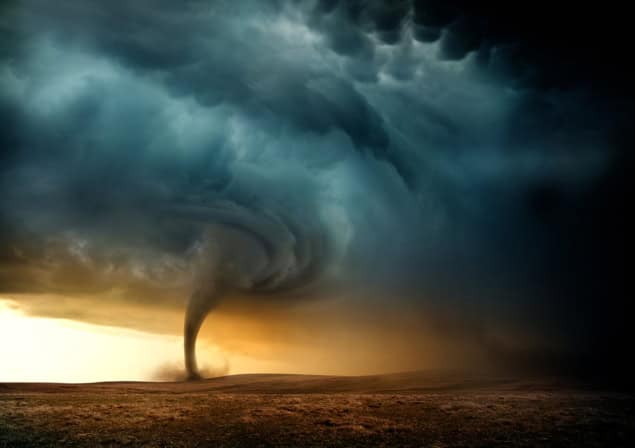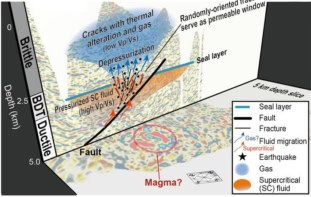
My home state of Kansas is famous for being very flat and having lots of tornadoes, so when I read that scientists in nearby Indiana have found a connection between flatness and tornado risk, I was intrigued.
Turns out, it’s not Kansas’ own flatness that’s to blame. Instead, scientists at Purdue University say that its exciting weather is due to the flat surface of the Gulf of Mexico. Together with other geographic factors, they argue, the ocean’s smoothness is what turns Kansas and neighbouring states into an ideal setting for films like the 1996 summer blockbuster Twister and its just-released sequel Twisters.
The scientists’ argument begins with a piece of conventional wisdom. The “tornado alley” of the North American Great Plains is commonly attributed to two geographic features: the Rocky Mountains to the west and the Gulf of Mexico and the Caribbean Sea to the south. When trade winds hit the east slope of this north–south mountain range, they turn northward and increase in speed while developing what meteorologists call “anticyclonic shear vorticity” – a fancy way of saying that the air starts to rotate counterclockwise. At the same time, southerly winds from the tropical Gulf pump warm, moist air into the lowest layer of the atmosphere. Together, these phenomena create conditions that favour severe thunderstorms and the tornadoes they spawn.
There’s just one problem with this story. The central region of South America (Uruguay and parts of Argentina, Paraguay and southern Brazil) is also next to a prominent north–south mountain range: the Andes. It also has a ready source of warm, moist air: the Amazon basin. And it also experiences a lot of severe thunderstorms – more thunderstorms, in fact, than central North America, with thunderclouds that extend further into the atmosphere. But tornadoes are much less common there, and the conventional wisdom can’t explain why.
An extra factor
In their study, which is published in PNAS, Purdue’s Dan Chavas and his then-PhD student Funing Li, together with colleagues at the US National Center for Atmospheric Research, Stony Brook University, and Colorado State University, sought an explanation in a previously overlooked difference between North and South America. While the surface of the Gulf of Mexico and Caribbean Sea is smooth, they noted, the similarly warm-and-moist Amazon basin is heavily forested and contains terrain such as plateaus and highlands. Might this roughness explain the absence of a South American tornado alley?

To test this hypothesis, the scientists performed experiments using a global climate model. In the first experiment, they flattened a computerized version of the Amazon basin to ocean-like smoothness and modelled the resulting tornado potential in central South America. In the second experiment, they did the opposite, filling in the digital Gulf of Mexico and observing how this affected tornado potential in central North America.
The results were striking. The smoothed-out version of South America experienced around twice as many tornadoes as the real-world version. Northeastern Argentina was particularly hard-hit. Conversely, a filled-in Gulf in the model version of North America reduced the number of tornadoes by up to 41%, with the biggest drops seen in the Great Plains and the southeastern US.

Pollutants and other aerosols trigger more intense thunderstorms
As a solution to Kansas’ tornado problem, this finding isn’t terribly useful. Human geoengineers are not going to start filling in the Gulf of Mexico any time soon, and the natural processes that might do it would be cataclysmic. (Let’s just say that a few extra twisters would be the least of our problems.) But the research does have some practical implications. Rampant deforestation is making the Amazon basin smoother. Forest regrowth is making the eastern US slightly rougher. According to the researchers, such changes could affect tornado frequency, though the exact nature of the effect is hard to predict.
“An important question is how terrain and land cover may alter the response of tornadoes in the future, as climate change may shift the large-scale atmospheric circulation and the geographic patterns of severe thunderstorm and tornado activity that it produces,” they write. “We hope our study motivates future research exploring those additional factors.”



